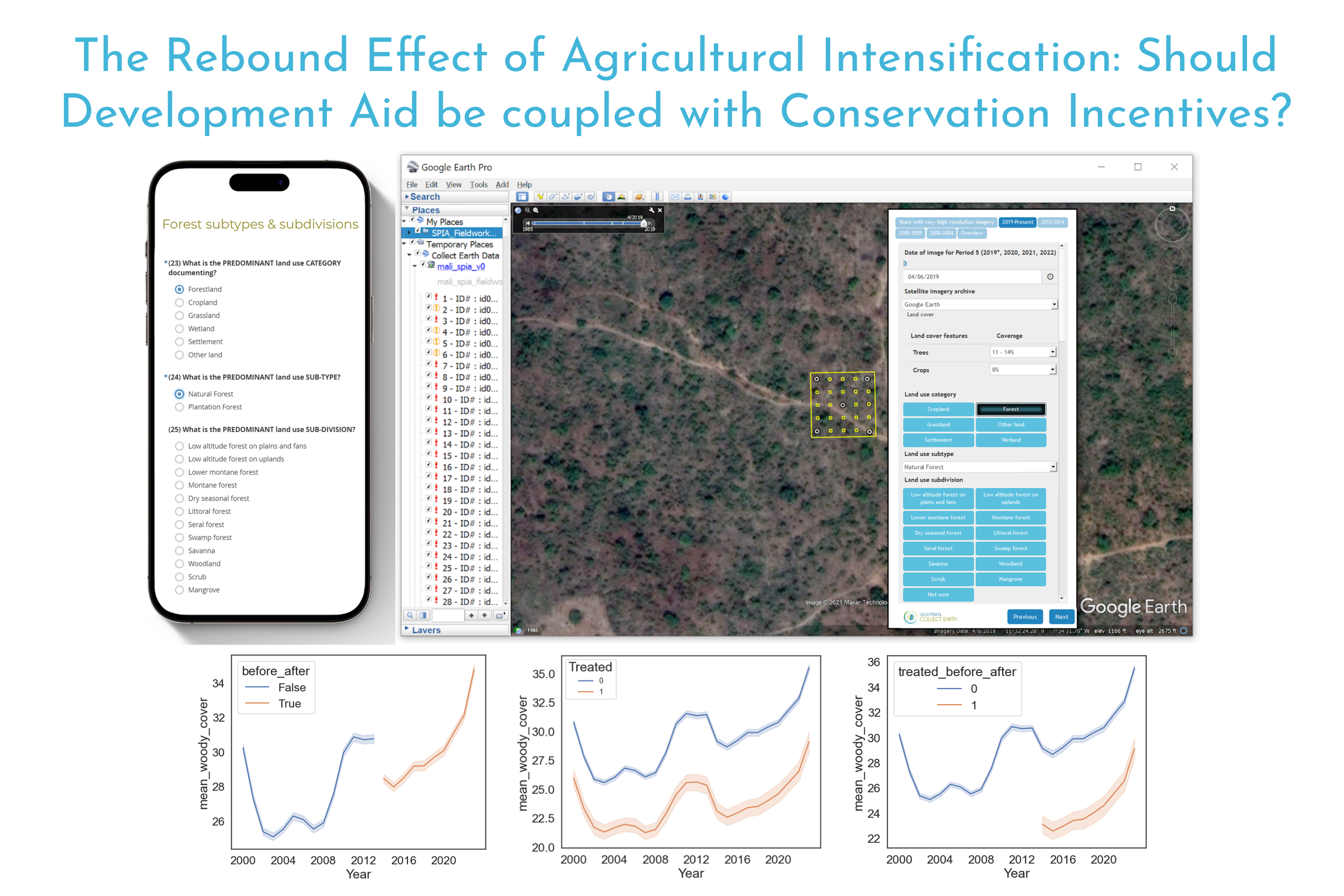The Rebound Effect of Agricultural Intensification: Should Development Aid be coupled with Conservation Incentives?
Dilini Abeygunawardane, Patrick Meyfroidt, Adia Bey, Michelle Picoli, Philippe Rufin Robert Heilmayr, John Nzungize, and Daniel Müller
Forthcoming
Intensification and total factor productivity growth brought about by Green Revolution is estimated to have saved 3–4% of agricultural land globally between 1965 and 2000. Despite the broader consensus on land saving effects (Borlaug’s hypothesis), intensification can also lead to further expansion of agricultural land (Jevons paradox alias rebound effect). Whether agricultural intensification leads to land saving or a rebound effect largely depends on the market elasticities, market integration, and institutional integrity. However, our ability to foresee these divergent environmental impacts is still at its infancy. Here we present the results of a geo-spatial impact evaluation (GIE) assessing land use and land cover changes in response to a large-scale agricultural intensification effort by CGIAR-ICRISAT in the Sikasso region in Mali. Over 100,000 farmers across 227 villages adopted sorghum and millet intensification technologies (treatment) between 2014 and 2015, attaining yield increases in the range of 30-60%. We used Landsat images in a random forest regression model to generate a panel of land use outcome metrics, including tree cover and cropland extent, from 2000 to 2023. The predictions of tree cover and cropland extent were validated using field data collected in 2022 covering 4000 sites and over 1000 Collect Earth sampling points drawn from high and very high-resolution satellite imagery for the entire study period. We combined this panel of outcome metrics of land use and land cover with the treatment and a panel of matched covariates measuring other market and infrastructure developments, environmental and agricultural suitability, and socio-economic characteristics in a difference-in-difference (DiD) model to obtain an unbiased estimate of the causal effect of sorghum and millet intensification technologies in the Sikasso region in Mali at the village level. Treated villages experienced a 1.1% (std. err 0.2%) decline in total tree cover annually. Tree cover within cropland experienced a decline of 0.7% (std. err 0.2) while tree cover outside cropland experienced a 1.8% (std. err 0.4) decline. These results suggest that the sorghum and millet intensification efforts in the Sikasso region in Mali led to a rebound effect. Without measures to mitigate potential environmental damage, the resources directed toward boosting productivity may inadvertently undermine the ecosystems that sustain agriculture itself.

